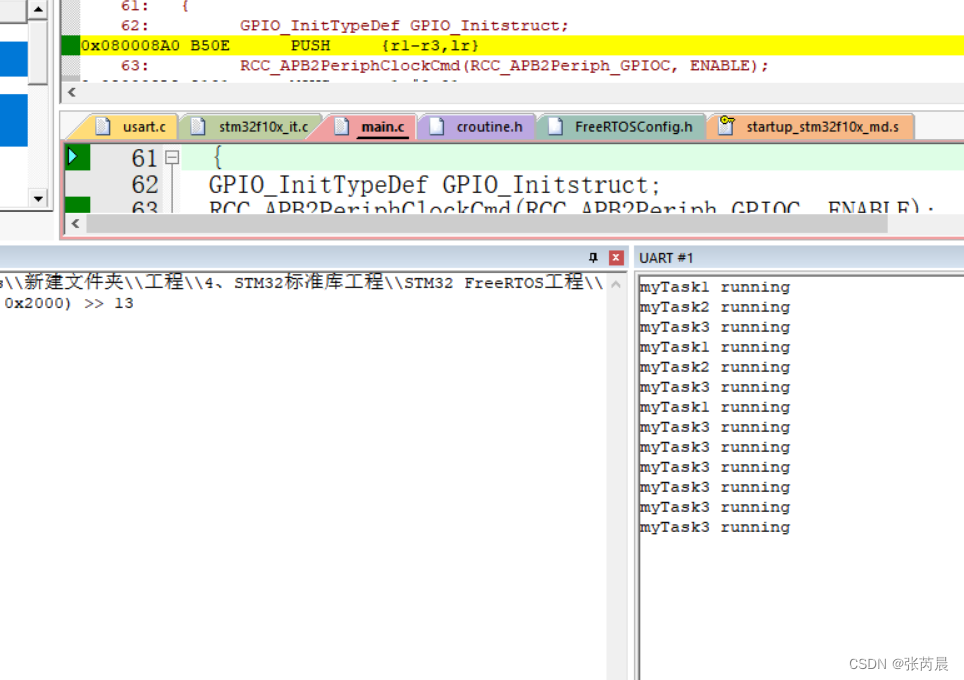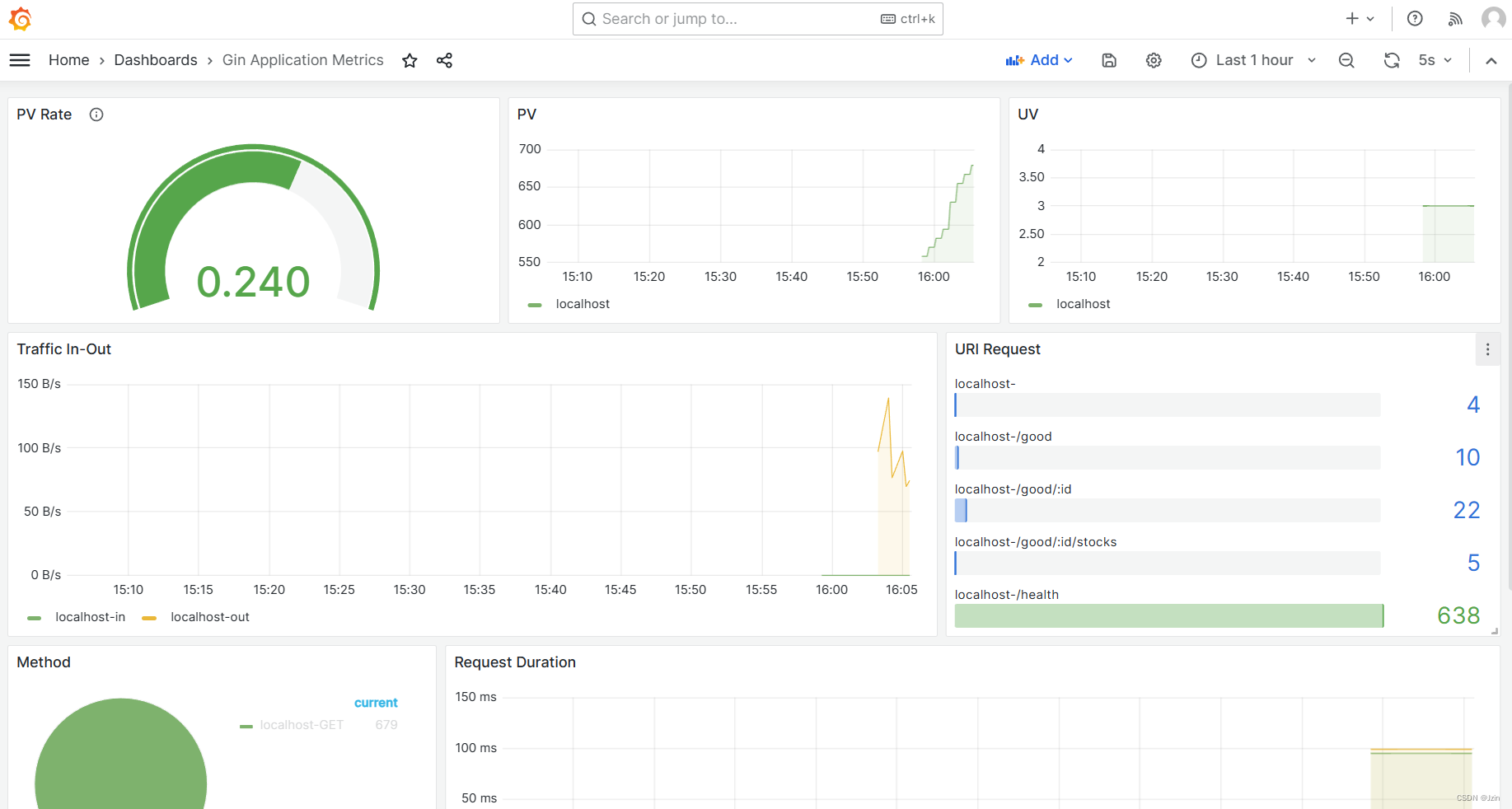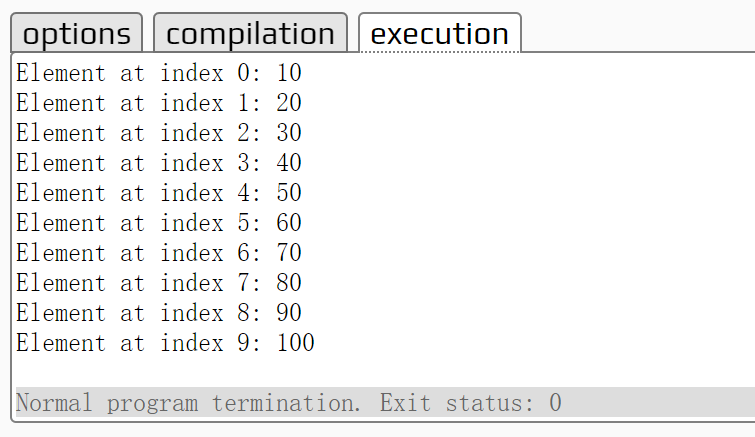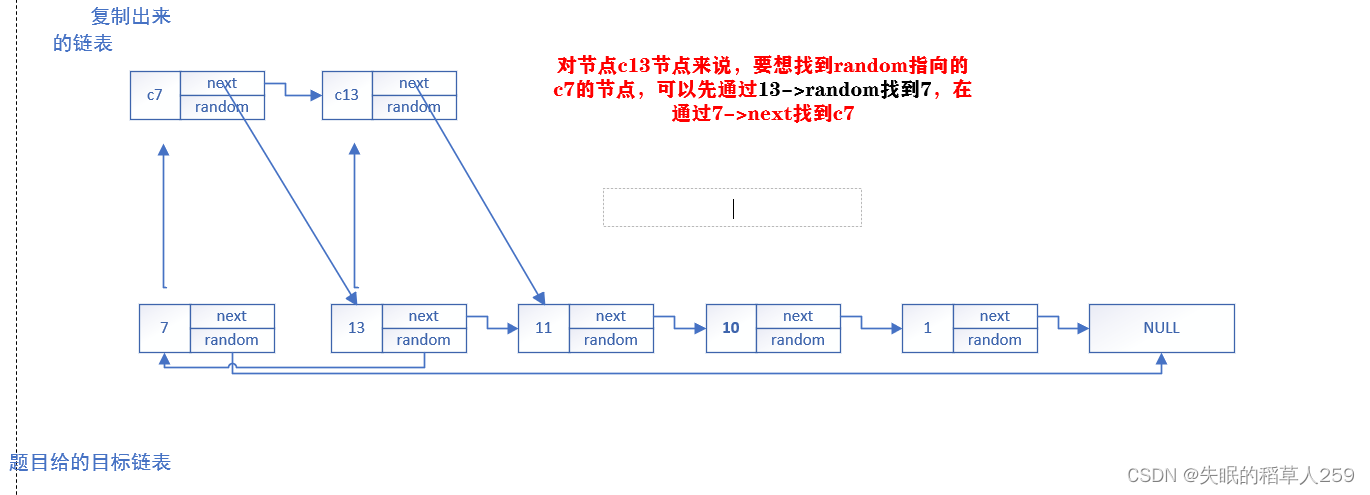1 代理池搭建
2 代理池使用
2.1 搭建django后端测试
3 爬取某视频网站
4爬取某视频网站
5 bs4介绍和遍历文档树
1 代理池搭建
# ip代理-每个设备都会有自己的IP地址-电脑有ip地址---》访问一个网站---》访问太频繁---》封ip-收费:靠谱稳定--提供api-免费:不稳定--自己写api用-开源的:https://github.com/jhao104/proxy_pool免费代理---》爬取免费代理---》验证---》存到redis中flask搭建web---》访问某个接口,随机获取ip# 搭建步骤:1 git clone git@github.com:jhao104/proxy_pool.git2 pycharm中打开3 安装依赖:创建虚拟环境 pip install -r requirements.txt4 修改配置文件: DB_CONN = 'redis://127.0.0.1:6379/0'5 运行调度程序和web程序# 启动调度程序python proxyPool.py schedule# 启动webApi服务python proxyPool.py server6 api介绍/ GET api介绍 None/get GET 随机获取一个代理 可选参数: ?type=https 过滤支持https的代理/pop GET 获取并删除一个代理 可选参数: ?type=https 过滤支持https的代理/all GET 获取所有代理 可选参数: ?type=https 过滤支持https的代理/count GET 查看代理数量 None/delete GET 删除代理 ?proxy=host:ip# http和https代理-以后使用http代理访问http的地址-使用https的代理访问https的地址
2 代理池使用
"公网" 和 "内网" 是网络术语,用于描述不同的网络范围和可访问性。以下是它们的定义和示例:**公网 (Internet)**:- **定义:** 公网是指全球范围的互联网,连接了世界各地的计算机、服务器和设备,允许它们通过因特网协议(IP)进行通信。- **示例:** - 当您使用浏览器访问网站,例如 Google、Facebook 或 Twitter,您是通过公网与这些网站的服务器通信。- 电子邮件发送和接收也是通过公网进行的,例如使用 Gmail 或 Outlook 邮箱。- 在社交媒体上与全球范围内的朋友互动,如发布推文、分享照片或发布视频。**内网 (Intranet)**:- **定义:** 内网是指一个私有网络,通常在组织、公司或机构内部使用,用于内部通信、数据共享和资源管理。它通常不直接连接到公网。- **示例:** - 企业内部网络:大多数组织都有内部网络,用于员工之间的通信和共享内部资源。这些网络可以包括内部网站、文件共享和内部电子邮件系统。- 家庭网络:在家庭网络中,您可以有多个设备(例如台式电脑、笔记本电脑、智能手机、智能家居设备等)连接到一个本地路由器,形成一个内部网络。这个内部网络允许这些设备共享文件、打印机和互联网连接,但通常不会直接暴露给公网。在这两个示例中,公网是全球范围的互联网,而内网是限定在特定组织或家庭的私有网络。
内网通常需要特定的访问权限才能连接到公网,并且通常通过防火墙或路由器进行保护,以确保安全性和隐私。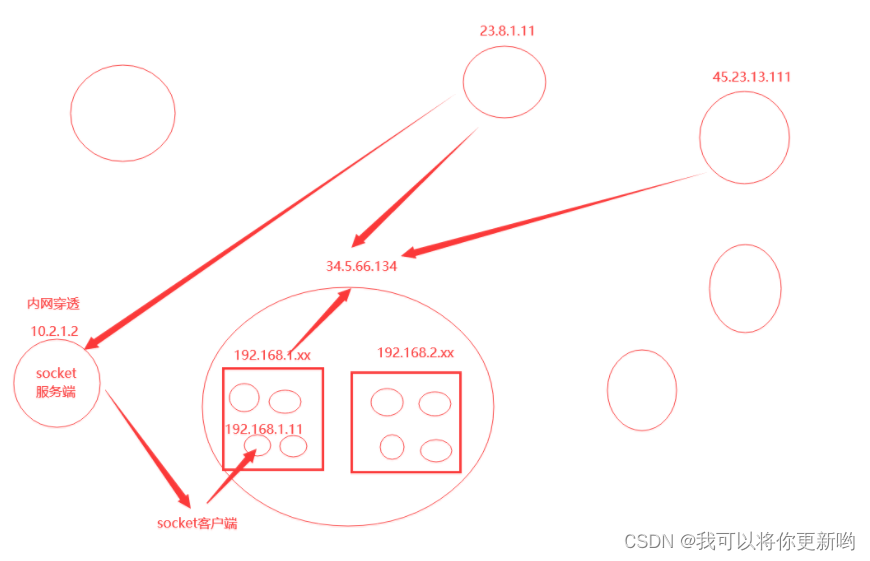
2.1 搭建django后端测试
import requests
res = requests.get('http://192.168.1.252:5010/get/?type=http').json()['proxy']
proxies = {'http': res,
}
print(proxies)
# 我们是http 要使用http的代理
respone = requests.get('http://139.155.203.196:8080/', proxies=proxies)
print(respone.text)
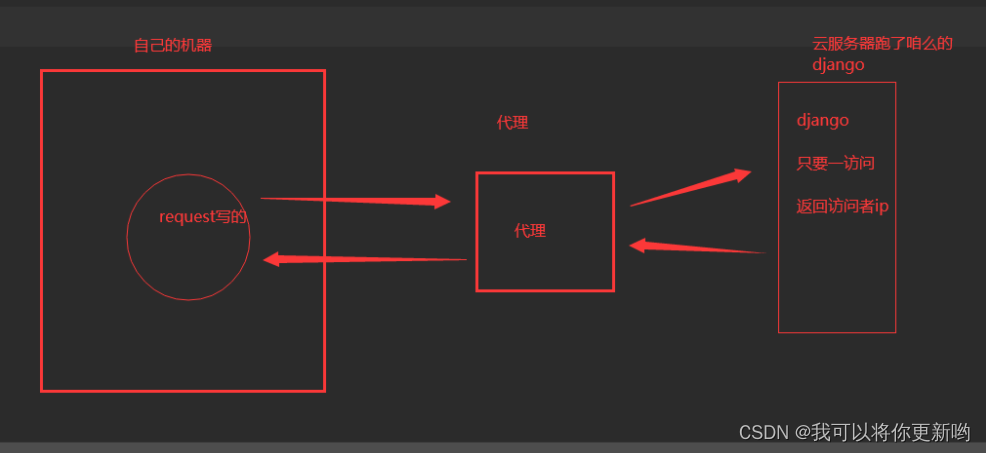
# 步骤:1 写个django,只要访问,就返回访问者ip2 部署在公网上---》python manage.py runserver 0.0.0.0:80003 本机使用代理测试import requestsres1 = requests.get('http://192.168.1.63:5010/get/?type=http').json()dic = {'http': res1['proxy']}print(dic)res = requests.get('http://47.93.190.59:8000/', proxies=dic)print(res.text)# 补充:代理有 透明和高匿透明的意思:使用者最终的ip是能看到的高匿:隐藏访问者真实ip,服务端看不到
3 爬取某视频网站
# 目标:爬取该网站的视频,保存到本地 https://www.pearvideo.com/ import requests
import re# 请求地址是:
# https://www.pearvideo.com/category_loading.jsp?reqType=5&categoryId=1&start=0
res = requests.get('https://www.pearvideo.com/category_loading.jsp?reqType=5&categoryId=1&start=0')
# print(res.text)
# 解析出视频地址---》正则
video_list = re.findall('<a href="(.*?)" class="vervideo-lilink actplay">', res.text)
# print(video_list)
for video in video_list:video_id = video.split('_')[-1]url = 'https://www.pearvideo.com/' + videoprint(url) # 向视频详情发送请求---》解析出页面中mp4视频地址---》直接下载即可header = {'Referer': url}res_json = requests.get(f'https://www.pearvideo.com/videoStatus.jsp?contId={video_id}&mrd=0.14435938848299434',headers=header).json()mp4_url = res_json['videoInfo']['videos']['srcUrl']real_mp4_url = mp4_url.replace(mp4_url.split('/')[-1].split('-')[0], 'cont-%s' % video_id)print(real_mp4_url)# 把视频保存到本地res_video = requests.get(real_mp4_url)with open('./video/%s.mp4' % video_id, 'wb') as f:for line in res_video.iter_content(1024):f.write(line)# res=requests.get('https://www.pearvideo.com/video_1526860')
# print(res.text)# 第一层反扒:需要携带referfer
# header = {'Referer': 'https://www.pearvideo.com/video_1527879'}
# res = requests.get('https://www.pearvideo.com/videoStatus.jsp?contId=1527879&mrd=0.14435938848299434', headers=header)
# print(res.text)# 反扒二:
# https://video.pearvideo.com/mp4/adshort/20190311/ 1698982998222 -13675354_adpkg-ad_hd.mp4 返回的
# https://video.pearvideo.com/mp4/adshort/20190311/ cont-1527879 -13675354_adpkg-ad_hd.mp4 能播的
# s = 'https://video.pearvideo.com/mp4/adshort/20190311/1698982998222-13675354_adpkg-ad_hd.mp4'
# print(s.replace(s.split('/')[-1].split('-')[0], 'cont-1527879'))4 爬取新闻
# 没有一个解析库---》用正则---》解析库--》html/xml
import requests
# pip install BeautifulSoup4
from bs4 import BeautifulSoupres = requests.get('https://www.autohome.com.cn/news/1/#liststart')
# print(res.text)
# 找到页面中所有的类名叫article ul标签
soup = BeautifulSoup(res.text, 'html.parser')
# bs4的查找
ul_list = soup.find_all(class_='article', name='ul') # 所有的类名叫article ul标签
print(len(ul_list))
# 循环再去没一个中,找出所有li
for ul in ul_list:li_list = ul.find_all(name='li')for li in li_list:h3 = li.find(name='h3')if h3:title = h3.texturl = 'https:' + li.find(name='a')['href']if url.startswith('//'):url = 'https:' + urldesc = li.find(name='p').textreade_count = li.find(name='em').textimg = li.find(name='img')['src']print(f'''文章标题:{title}文章地址:{url}文章摘要:{desc}文章阅读数:{reade_count}文章图片:{img}''')# 爬5页--->把图片保存到本地--->把打印的数据存储到mysql中--》建个表5 bs4介绍和遍历文档树
# BeautifulSoup 是一个可以从HTML或XML文件中提取数据的Python库,解析库
# pip install beautifulsoup4
from bs4 import BeautifulSouphtml_doc = """
<html><head><title>The Dormouse's story</title></head>
<body>
<p class="title"><b>The Dormouse's story</b><span>lqz</span></p><p class="story">Once upon a time there were three little sisters; and their names were
<a href="http://example.com/elsie" class="sister" id="link1">Elsie</a>,
<a href="http://example.com/lacie" class="sister" id="link2">Lacie</a> and
<a href="http://example.com/tillie" class="sister" id="link3">Tillie</a>;
and they lived at the bottom of a well.</p><p class="story">...</p>
"""
soup = BeautifulSoup(html_doc, 'html.parser') # 解析库可以使用 lxml,速度快(必须安装) 可以使用python内置的 html.parser# print(soup.prettify())-----重点:遍历文档树----------
#遍历文档树:即直接通过标签名字选择,特点是选择速度快,但如果存在多个相同的标签则只返回第一个
#1、用法 通过 . 遍历
# res=soup.html.head.title
# res=soup.p
# print(res)
#2、获取标签的名称
# res=soup.html.head.title.name
# res=soup.p.name
# print(res)
#3、获取标签的属性
# res=soup.body.a.attrs # 所有属性放到字典中 :{'href': 'http://example.com/elsie', 'class': ['sister'], 'id': 'link1'}
# res=soup.body.a.attrs.get('href')
# res=soup.body.a.attrs['href']
# res=soup.body.a['href']
# print(res)#4、获取标签的内容
# res=soup.body.a.text #子子孙孙文本内容拼到一起
# res=soup.p.text
# res=soup.a.string # 这个标签有且只有文本,才取出来,如果有子孙,就是None
# res=soup.p.strings
# print(list(res))#5、嵌套选择# 下面了解
#6、子节点、子孙节点
# print(soup.p.contents) #p下所有子节点
# print(list(soup.p.children)) #得到一个迭代器,包含p下所有子节点
# print(list(soup.p.descendants)) #获取子子孙节点,p下所有的标签都会选择出来#7、父节点、祖先节点
# print(soup.a.parent) #获取a标签的父节点
# print(list(soup.a.parents) )#找到a标签所有的祖先节点,父亲的父亲,父亲的父亲的父亲...
#8、兄弟节点
# print(soup.a.next_sibling) #下一个兄弟
# print(soup.a.previous_sibling) #上一个兄弟
#
print(list(soup.a.next_siblings)) #下面的兄弟们=>生成器对象
# print(soup.a.previous_siblings) #上面的兄弟们=>生成器对象

